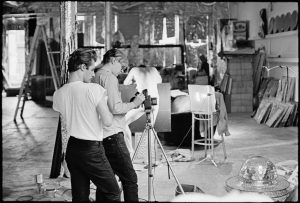Port spoke to the winners of Free Range 2019 on photography as a historical, political and social platform from which to cast their very particular gaze
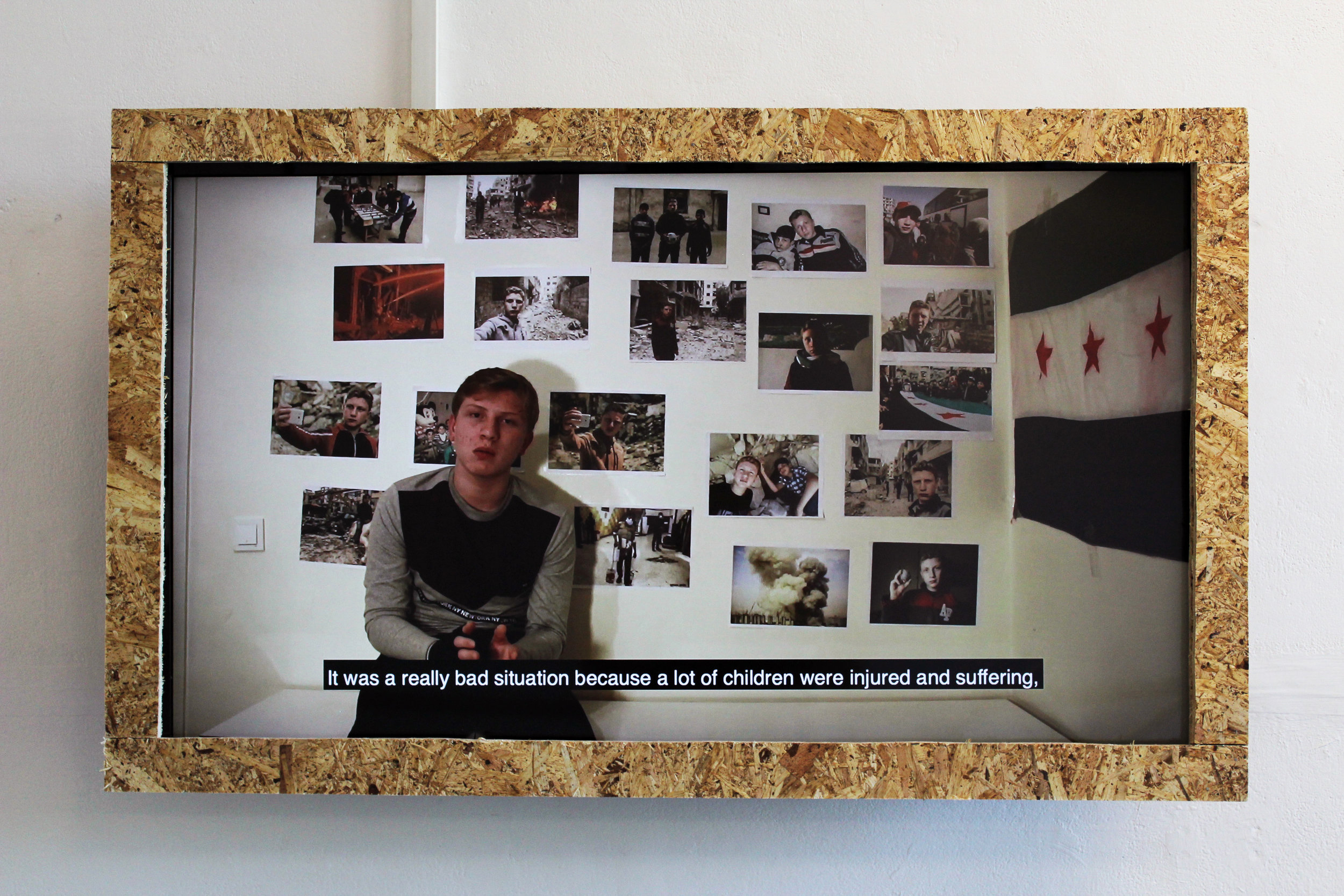
Fly-on-the-wall documentation of London’s corporate universe, sculptural piecing’s of discarded river Thames objects and a rolling list of the 34,361 refugees that died (so far) attempting to find freedom in the EU – these are the diverse array of performance, installation and photography pieces winning the 19th edition of the Free Range show in London.
The show, exhibited the work of over 800 Photography & Fine Art graduates at the Truman Brewery in London, and presented winners Christoph Jones, Angela Blažanović and Jennifer Forward-Hayter in their variegated perspectives – providing testament to issues facing the UK and the rest of the world – plastic pollution, changing sociological norms and the refugee crisis.
Port spoke to all 3 winners about their chosen mediums, the development of their work and career, as well as what they hoped their audiences would take away from the show this 2019.
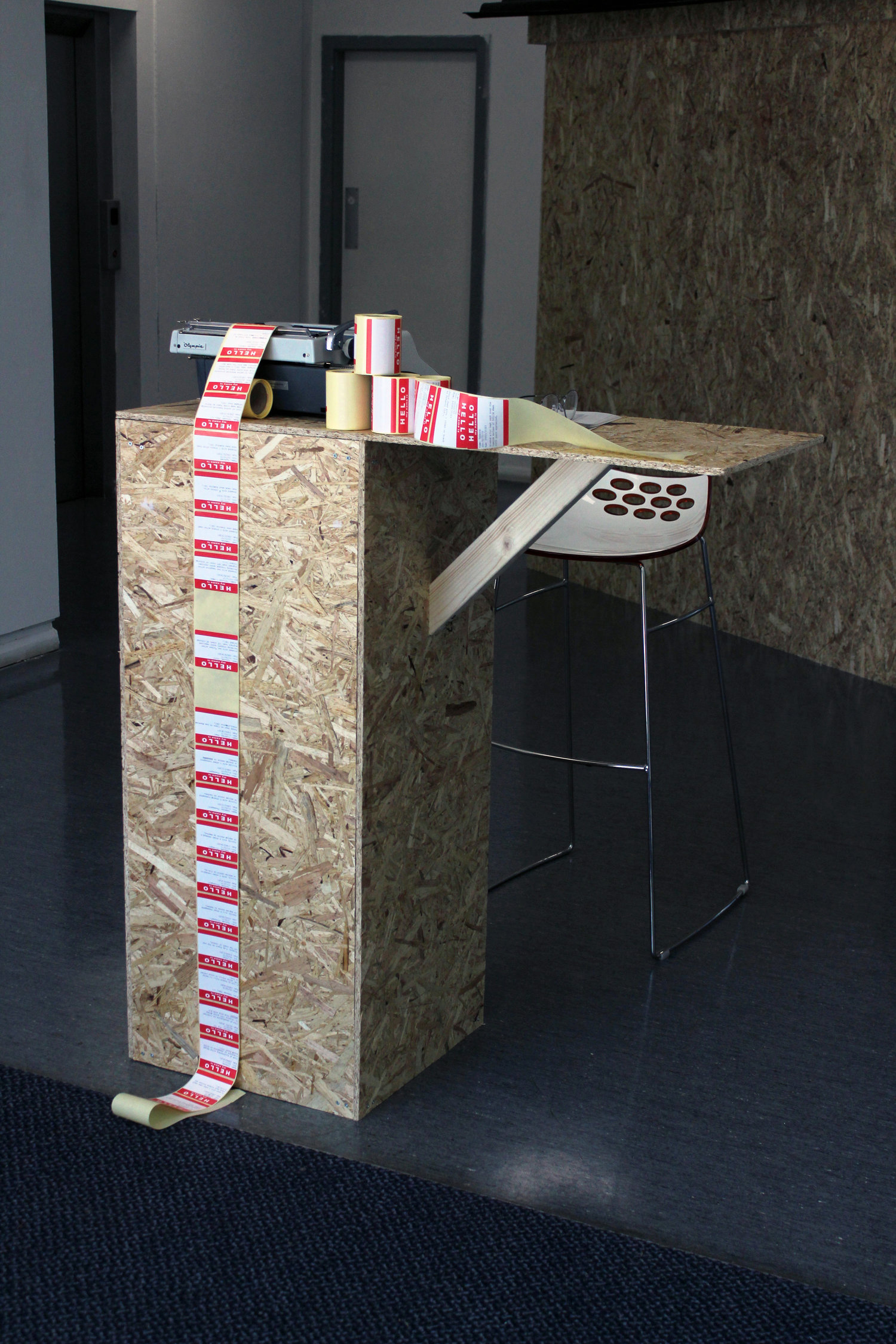
Christoph Jones
The Art Week winner of Free Range 2019, Christoph Jones, presented his 3 part installation, sculpture and performance Vaken – an important probe into politicians play on our fear of the unknown and the ongoing and historical dehumanisation of those seeking refuge from places torn apart by war, genocide and slavery.
The name itself is a direct reference to Theresa May’s Operation Vaken, a pilot scheme introduced in 2013, encouraging the voluntary departure of those living illegally in the UK (accountable for at least 60 cases) and one of many devastating procedures aiming to enforce an “inhospitable environment” for asylum seekers. The UK based operation carries worrying associations to Nazi Germany where “vaken”, meaning “awake” in German, can be traced back to a song by the “Sturmabteilung”– the original paramilitary wing of the Nazi party.
Jones’ work combines the real-life testimony of Syrian refugee Muhammad Najem, a house 187 x 187 x 200cm in size – the same recommended size for the space provided to refugees by the UN in an emergency, as well as a performance piece involving the continuous printing and distribution to Free Range audiences of labels containing the individual case names (if known) of those that have passed away attempting to seek refuge in the UK.
What did the initial idea come from and how did it develop?
I’ve always followed socio-political events and have been especially sympathetic to the plight of refugees. I’m perpetually enraged at the treatment of them by our government and the EU. When it came to developing this project, I was very aware of being privileged enough to be afforded a platform and an audience. I felt like knowing what is happening to these innocent people, I had no other ethical alternative than to use the platform to amplify the reality, story and voices of refugees. I created several pieces collectively named “Vaken”, after the Home Office’s racist endeavour ‘Operation Vaken’, which was responsible for the Windrush Scandal. The collection includes a video made collaboratively with the sixteen-year-old Syrian refugee, Muhammad Najem, a refugee shelter filled with mirrors inscribed with Muhammad’s testimony, and a performance during which I spent the entirety of the exhibition typing out the names of refugees onto name stickers and sticking them onto visitors, the piece that later became @refugee_list.
The Vaken Installation is accompanied by the social media account @Refugee_List. How does the digital enhance the piece and its message?
There is a whole new dimension to publishing the labels this way, that of virality and democratisation. The spread of the piece is largely out of my hands as well as the hands of those normally responsible for popularising art – critics, curators galleries etc. It is up to the viewer of the piece to decide how much exposure it deserves. To many who view it, it’s probably not obvious that it was originally considered a piece of activist art, to them it is just activism. Social Media allows the work to spread much further than I can spread it in a gallery. This allows for the understanding and humanisation contained in the work to reach many more people.
Can you elaborate on your archival process? How did you go about uncovering the information of the refugee deaths provided on each of the “Hello My name is” stickers?
The source for the images is the ‘List of Refugee Deaths’ compiled by the organisation UNITED for Intercultural Action. The list has been used in various forms by other artists, most notably by Banu Cennetoğlu at the Liverpool Biennial, where it was twice torn down. In my case, rather than publishing the list as a whole I’m simply using it as a source. It is quite a labour-intensive job. I spent 2 weeks reformatting the list to ensure that each individual has their own entry and number, I now transfer the information to the ‘sticker’ and queue it up to be published, one image an hour for over 4 years.
And can you explain a little of the performance side of the piece? What is it that you wanted to achieve in the interaction between you and your audience?
During both my Degree show and Free Range I was stationed at a desk that I had made along with the List and a typewriter. I spent all day typing the List onto the ‘Hello My Name is’ stickers and giving them out to any visitors I could. I understood that this would inspire many questions, which is something I’d hoped for. The piece is not only about objects (stickers, typewriters, desks etc) but about communication, understanding, humanisation, learning. I was able to talk to the visitors about the issues presented in the work and they were able to talk to me about their thoughts, feeling and experiences that related. The work becomes shared and communal, the fate of the people typed onto the stickers becomes shared too, as well as the understanding of the plight of the 70 million other displaced people in the world.
What do you want your audience to take away from this project?
Understanding. What I mean is that I hope by showing people an issue in a form that they might not have seen it presented before, their attitude toward that issue might be different or they might be motivated to help. Many people’s understanding of refugees come from the media and government where they are called “migrants”, “Illegals”, “scroungers”, “masses” etc. Because of this the general attitude toward the plight of refugees is one of hostility or indifference. I think that when I show someone a video of Muhammad Najem, or an actual refugee shelter, or the tens of thousands of name labels of a dead refugees, I am cutting through the ideological smog of the media and the government, and connecting real people to the reality of real refugees.
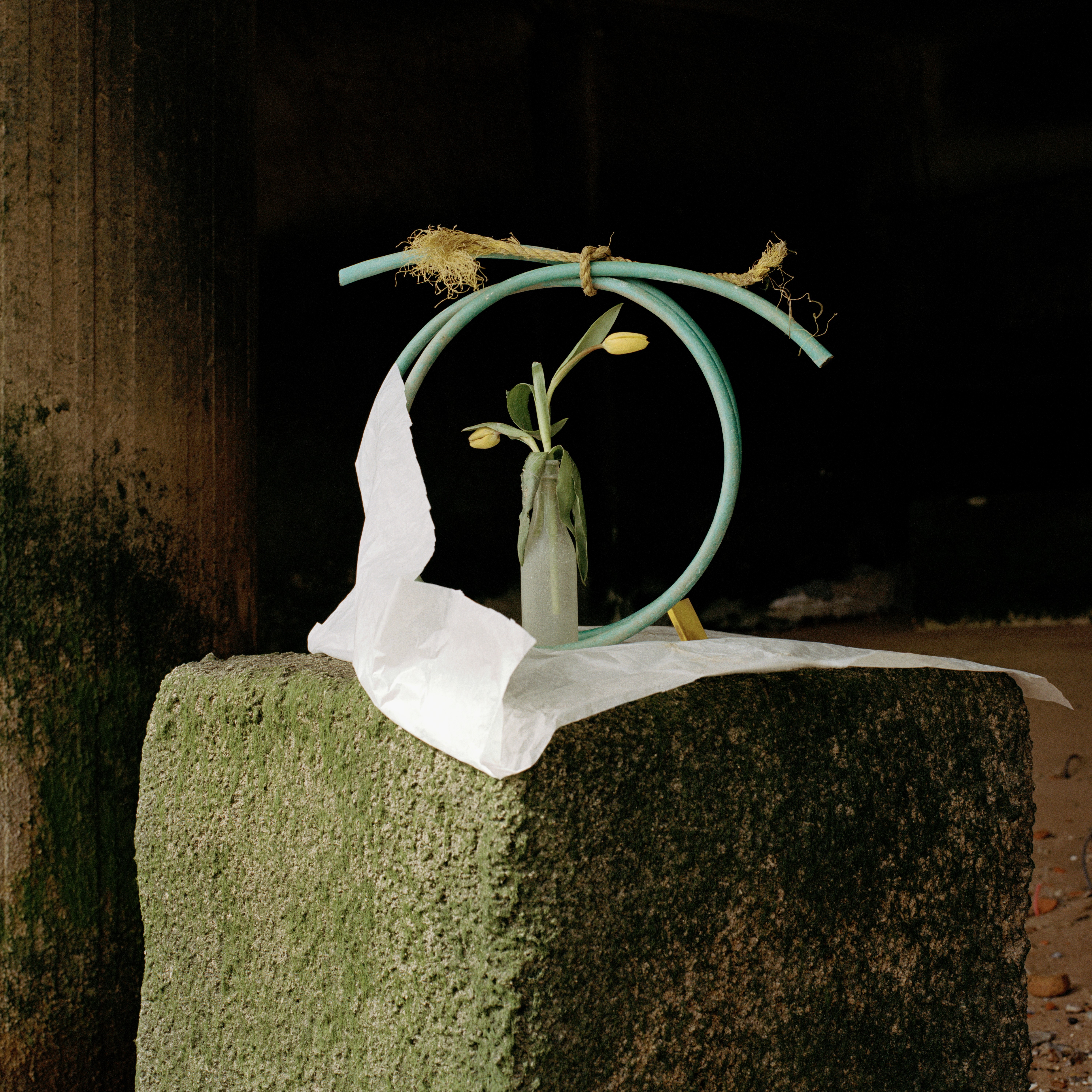
Angela Blažanović
Angela Blažanović, winner of week 2, develops a very different approach, incorporating both sculpture and photography in her installation Fragments of a River, a reconfiguration of normalised and discarded objects and a probe into man-made environments and human anomie.
Blažanović first visited the Thames just last year, quickly developing an innate fascination with the randomness of the objects washed up on the river banks and the ambiguity of the river itself. Her photography develops this ephemerality – creating sculptural amalgamations of the discarded objects, caught in what Blažanović describes as a “moment of balance”.
What did the initial idea come from and how did it develop?
The starting point for this project was my first visit to the river shore of the Thames last September. I was instantly fascinated with the place and the idea that one could walk on ground which hours later would be filled with streaming water. It was this ambiguity of the river which sparked my interest in creating a project about it. I was interested in the randomness in objects I would pass by while down at the shore. In a way I realised that we are so used to seeing any kind of waste and rubbish scattered around everywhere that we do not question their existence; we accept it as part of the landscape. I started imagining where the objects came from and what stories lay behind them. I set out to create a project which would put the discarded objects in a new context in order to reevaluate their existence within landscape.
I started doing broad research on anthropological studies, contemporary photographers and historical paintings that would link to my subject; and experimented with different visual approaches until I found what I felt were images that translated what I wanted to say.
What is it about the mixture of sculpture and photography that particularly resonate with you as artistic mediums?
While I work mainly in the medium of photography I have always been intrigued by an interdisciplinary approach in art works. I feel like different mediums bring different qualities to a body of work. I am particularly drawn to photography because of its strong relationship to reality.
Regardless of an image’s potential of being manipulated digitally or in analogue, it remains a certain authority of reality as it resonates with us on a very basic level. As John Berger puts it, everyone is able to understand an image, even the unspoken child. I believe it is this potential within photography that makes it such a powerful medium. It has a certain democratic value, as it has the ability to speak to a large audience and tell stories that relate to everyone.
Sculpture on the other hand carries the potential of creation within space. For this project I wanted to take something existing (found objects) and through the act of making, form something new and visually pleasing in order to refocus the viewer’s attention. Together sculpture and photography offered me the possibility to capture my creations in a temporary space. I create where I find – along the river shore. With a rising tide the sculptures disappear, but the photograph remains.
How did you go about composing your sculptural amalgamations?
I create and photograph my sculptures on the river shore itself. I usually focus on creating one composition a day. I would stroll around the shore while the tide is still sinking and collect any potential objects; anything that sparks my interest in colour or shape. This means that I am limited to what I find that particular day; my photographs become records of my findings.
In a sense, I try to form my sculptures in a fragile state and photograph them in a moment of balance. The resulting tension of an anticipated collapse within the image speaks to the temporary nature of my compositions and the mentioned ambiguity of the river itself. The sculptures only exist for a short period of time, once I leave them behind the rising water washes them away again. It reflects the river’s shift between calm sanctuary and dangerous stream with the cycle of the tide.
How does this project fit into your wider body of work?
Previously I have worked on projects exploring identity and the notion of home, which were very much inspired by my own upbringing and personal story. I have always been interested in the symbiotic relationship between human and landscape. So with ‘Fragments of a River’ I wanted to explore this relationship from a different perspective. To be honest I was not very familiar with shooting still lives prior to this body of work and really just tried to set myself new challenges. People are such impactful subjects to shoot and I became confident in that area to the point that I felt the need to void all my images of humans in order to explore a new territory for myself.
What do you want your audience to take away from this project?
With this project I have different intentions. Foremost, I want to spark the viewer’s imagination to re-imagine the lost narratives that lay behind my found objects. I want the viewer to be intrigued by the visual to a point that one questions what lays behind the image. I am personally fascinated with the idea that a landscape speaks of the humans it inhabits. It is fascinating from an anthropological point of view. One can find objects from the last few hundred years along the shore.
It offers questions of the Anthropocene, the theory that humanity has introduced a new geological era to earth. And as fascinating it is to follow traces of human stories along the shore, my images are also testament to a wider and increasingly urgent matter; plastic pollution. If my images help to raise awareness, even just in a small scale, on how we impact our surrounding environment and make people question their own responsibility, it would be a success already.
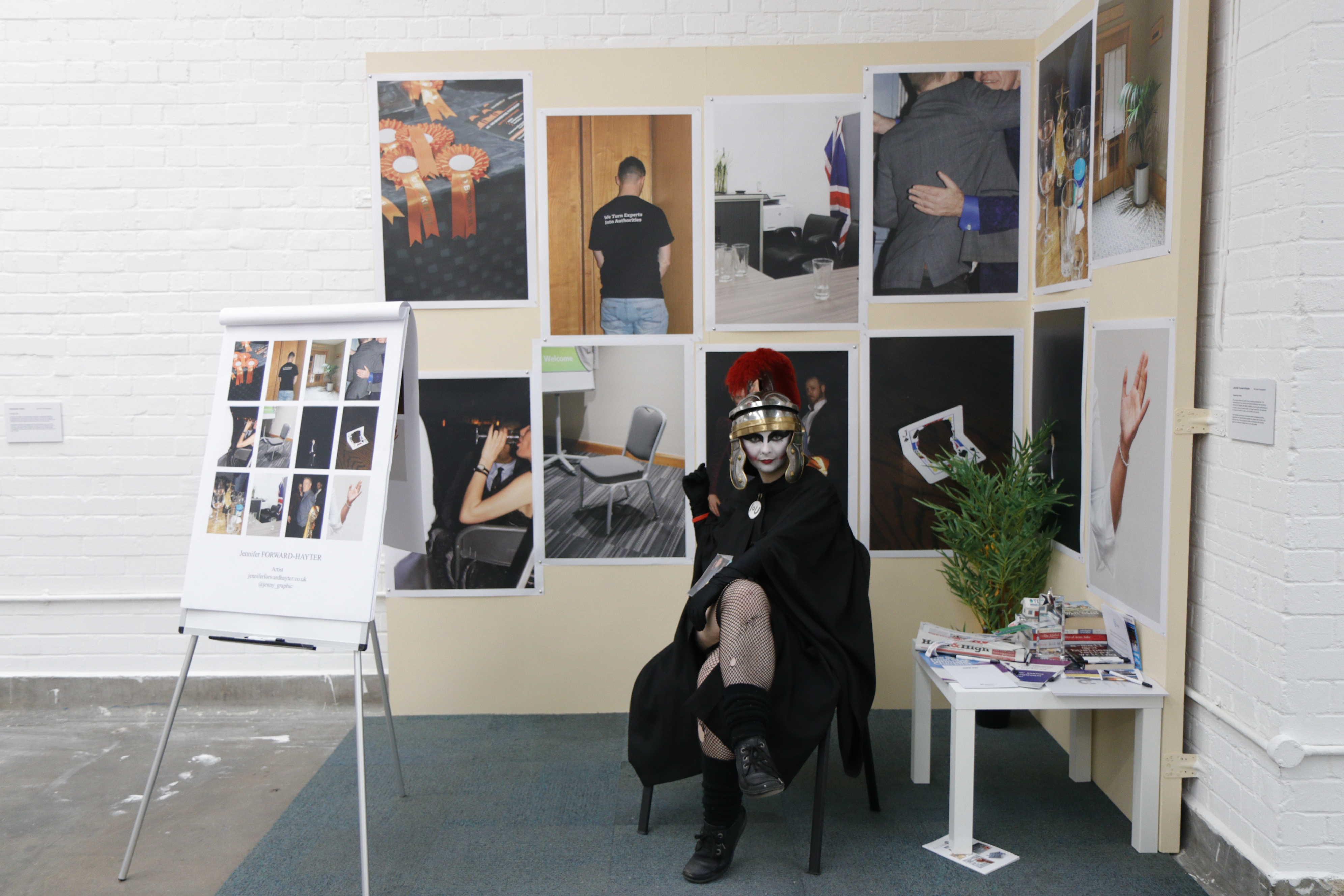
Jennifer Forward-Hayter
Winner of week 1, Jennifer Forward-Hayter, presented her work People Buy People, a documentary-come-investigative look into the corporate world of networking events, parties and team-building workshops – an industry worth £14-15 billion that relies heavily on the corporate insecurities and codependent many.
Developing instances specific to this corporate world and office environment – chairs, crisp white shirt sleeves, crumpled cards and half-empty glasses of water – these peripheral glimpses coat the walls of an office, complete with plant and chair planted in the Truman Brewery in Brick Lane.
What did the initial idea come from and how did it develop?
The initial beginnings for this project, People Buy People, came from a small off-the-cuff remark. My brother, a traditional independent farmer, was getting married, and for this, he got himself a suit, the first formal suit he’d bought himself since school prom. His friends joked with him, saying he ‘looked like a London Banker’. When I finally came down from London, where I was studying for university, for the wedding in Dorset, where we both grew up, and saw the suit, it was nothing but a normal blue suit. Thousands of people wear these suits every day, not just in London, but in countless metropolises across the world. Much like a rat, if you live in a crowded city, you’re probably no more than 6ft away from a suited businessman.
There are millions of suit-wearing professionals, however I had never grown up with them in my life, in Dorset. I didn’t know what they did, what did they actually spend their days doing? However, this allowed me to view them, not as some all-powerful, all-culturally encompassing order, but this weird little subculture, that only existed on the tube at Peak times, and disappeared a few miles beyond the M25.
From what I understand, you signed up to many events through Eventbrite and garnered invites through people you met at parties and networking events. Can you tell us a little of your experience photographing this corporate world?
I had a little experience with going to networking events and similar events, but have always kept them within the ‘art sphere’, such as private views. However, there is a lot of controversy in them too. I often preferred going to the more traditional events, rooms full of old rich people. At these places, I was often the only young person. I would dress outrageously, and be quite outspoken (I recently spent a night shaming a UMG rep about the copyright abuse on YouTube, telling those who he’d try to talk to that he was technically a criminal, not a great look for a networking event), so many of these key figures often want to come and check me out, I’m the attraction!
When I went to photograph these scenes more seriously, I dressed myself in a suit, and brylcreemed my hair down, and went with an open mind to MLM scams and Oil conferences. Overall, as I was lead deeper and deeper into the rabbit hole, and made attending these events my life, I very often got bored, and started exaggerating my career, or telling people I was a landlord or a teacher. With the camera I got more and more daring, to the point of pulling out a 800mm lens and following a speaker from the back of a room. Sometimes I would run up to a speaker afterward, and ask if I could photograph their hands, if they repeated a section of their talk. I had fun being a voyeur, and as I wasn’t invested in the content of these courses, I didn’t have anything to lose from it, or to be embarrassed by.
However, whilst I could make fun at these events, I just felt sadder knowing that those around me were very much stuck here, possibly for the rest of their working lives. One course I attended requested for people to sign this before entry;
“I acknowledge and understand that my personal safety and well being is my responsibility at all times. I declare that I am medically and psychologically fit and have no reason to believe otherwise. I understand that material said with [X] event is for the benefit of my personal growth, and may challenge my beliefs and bring up emotional issues; however I acknowledge that it is not a replacement for advice given by any medical professional.”
Ultimately, it epitomised how damaging and negative these places are. Whilst you’re not physically locked into these windowless hotel basements, you’re socially stuck there.
Your photography provides a peripheral glimpse into corporate London life; the snapshot of a chair or a ‘shirted’ arm and bracelet develop instances specific to an office environment. The installation itself is the model of a similarly typical corporate space. What is that you wanted to achieve with this addition?
As I wanted to view the corporate world as a temporary, isolated subculture, and because my approach to how I was shooting, access, etc was with an element on impeding or interrupting this space, I wanted to culminate this into viewing this lifestyle as an experience. The corporate world, like a funfair, is just one possible ride in life. By creating the office, complete with takeaway flipcharts, pens with my name on, and a seat at a coffee table full of the essential business readings, I wanted to bring the ride of the corporate to the Bohemia of Brick Lane, where the corporate office is the real oddity amongst the vintage stalls and artist studios.
My biggest inspiration for the set, was actually Eric Andre. For his low-budget talk show parody, he would destroy a talk show set at the beginning of each episode, all for it to be reconstructed around him, again and again. By having the set, and following the various other performances of a US talk show, he created his own reality where for 20 minutes he really was a talk show host, despite the fact that culturally, he would never be the type of performer traditionally allowed in such a space. I wanted to achieve the same effect. And for Free Range, myself and anyone that sat in that chair, could transform into a corporate worker, all for a bit of fun, a time out from the rest of the perhaps more art-driven lives that Brick Lane provides.
Can you extrapolate a little on the title of the show: “People buy People”. What are you perhaps trying to infer about the state of human anomie?
‘People Buy People’ came from the realisation that all these supposedly horrible, powerful, rich white men in suits were a much more sympathetic theory then a lot would normally view them as. In fact, the reason why they chose such a role, or at least for the people I encountered, was because it was the ‘done thing’ to become. It was the best way to make money, and be able to afford your rent, a car, it was filling your impossibly free life with a normal 9-5 guarantee that you would be doing something. In short, it was a bunch of people wanting the safety and security of having someone else tell them what to do. This ranged from traditional corporate ladders and bosses, to the ‘Thought Guru’ industry. Often they offer very simple advice, ‘clean your room’, ‘meet other people’, ‘share jobs’, but this is everyday advice that we no longer get from anywhere else. As industries develop, the ‘influencers’ cannot derive structure from the ‘stock manager’, who in turn cannot get structure from the ‘coal miner’, and therefore people turn to Gurus who have learnt to sell this.
This personal development industry is worth £14-15 billion, with seminars often run weekly by each company, not to mention constant webinars, phone support, and books. Attendees come from all across the country to attend certain events, and whilst some (initial) meetings are free, they are often £3000 – £8000 for a weekend event. One woman I encountered through shooting these courses, had tried to make multiple businesses, and attended roughly 20 paid courses in 2 years, and couldn’t understand why she still wasn’t making any money. They are addictive, and if you ever find yourself in doubt with life, you can just buy it away… that’s the plan anyway…
What do you want your audience to take away from this project?
Overall, we need to move on from the idea that ‘the suit’, ‘the white collar worker’ ‘the corporate slave’ are now any different from the labourer of years past. If you work in an office, type emails all day, commute on a train, or even drive a company car, you’re now working-class.
Furthermore, this will inevitably keep changing. These structures become so relied upon, that no one ever expects them to fail, and therefore we never expect to lose them. Rush hour will always be the same, offices will always be there, even though as more people use them, they are already disappearing. The camera is a tool for history, and it’s easier than ever to record those everyday experiences, and just as early photographers documented field workers, house staffers, and kids in factories, as icons synonymous with traditional working-class, we must remember that one day we will find ourselves in those same annuls of history.
Free Range show information
View Christoph Jones’ ongoing work @refugee_list, as well as Muhammad’s posts on Twitter, Instagram and Youtube.
View Angela Blažanović’s work here
View Jennifer Forward-Hayter’s work here


